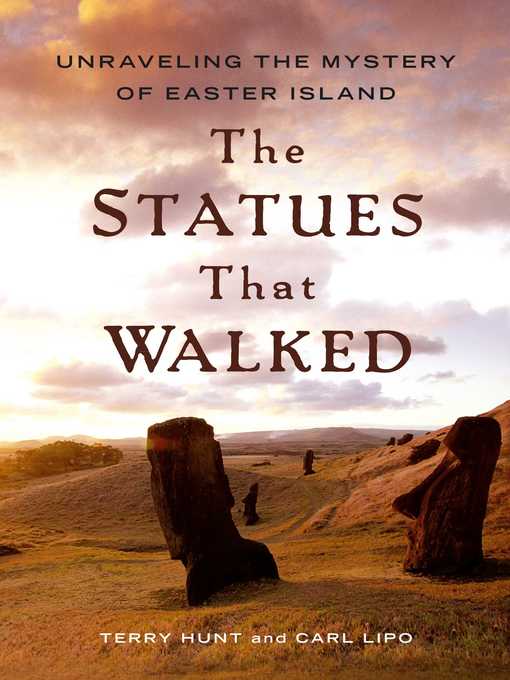
The Statues that Walked
Unraveling the Mystery of Easter Island
کتاب های مرتبط
- اطلاعات
- نقد و بررسی
- دیدگاه کاربران
نقد و بررسی

May 1, 2011
Modern research techniques enable debut authors Hunt (Anthropology/Univ. of Hawaii at Manoa) and Lipo (Archaeology/California State Univ., Long Beach) to review the "mysteries" of the Easter Islands and offer some solutions of their own.
Rapa Nui (aka the Easter Islands) have long been thought to illustrate how human environmental overreach led to collapse, as advanced monument builders undermined the ecology, beginning an inevitable slide. The authors make a counter-argument that "the problems were social, not a result of environmental ruin. History is the witness that Rapa Nui suffered near genocide, not self-inflicted 'ecocide.' " They offer an alternative to Norwegian adventurer Thor Heyerdahl's thesis that human settlers had arrived by 400 CE. Based on "all of the over 120 radiocarbon dates published for Rapa Nui," Hunt and Lipo confirm that the arrival of human settlers, including monument builders, was later than previously thought, and the deforestation earlier. Modern research has established the likelihood that rats were responsible for the destruction of the native giant palm. The authors also muster the evidence to show, contrary to what Heyerdahl claimed, that "the portrayal of an island dominated by a strong central ruling authority, or torn asunder by warring tribes, is simply wrong." The island's population, including statue makers, probably functioned as small, peaceful, cooperative agrarian groups that settled successfully in an environment already denuded of trees. They developed food-production techniques which worked in an environment already denuded of trees. What did the islanders in was the stream of ship-borne Western visitors—and the diseases they brought—that began in the 18th century.
A fascinating new chapter of the unwitting but tragic decimation of the native Rapa Nui populations, brought about unwittingly by cultural contact rather than the decline of their own society.
(COPYRIGHT (2011) KIRKUS REVIEWS/NIELSEN BUSINESS MEDIA, INC. ALL RIGHTS RESERVED.)

Starred review from June 15, 2011
Hunt (anthropology, Univ. of Hawaii, Manoa) and Lipo (anthropology, California State Univ., Long Beach) reconsider the mysteries of Easter Island (Rapa Nui), with its monumental statues--moai--that have generated fascination since the island's European discovery in 1722. Captain Cook in 1774 noted the island lacked wood and fresh water or signs of tools to have created the gigantic statues. The authors trace the oral histories that passed down the belief that the imprudence of islanders resulted in the island's barren, impoverished state, and they trace the legend of competition between two groups, the "Long Ears" and "Short Ears." Thor Heyerdahl, who studied and wrote about Easter Island, believed the two groups clashed in 1680, and that conflict resulted in demographic and environmental collapse. Jared Diamond, in Collapse, theorizes that cutting down the forests of giant palm trees for the creation and transportation of the huge statues led to the devastation of the island. Hunt and Lipo, writing about their fieldwork and that of others, are optimistic about the island's future. VERDICT Readers of literature on Easter Island will delight in the authors' insights on how the statues "walked" and the plentiful rat bone finds, but most of all, they'll appreciate the book's clarity. It should attract a wide readership among both adventure-loving lay readers and anthropologists/archaeologists.--Joan W. Gartland, Macomb Community Coll. Libs., Warren, MI
Copyright 2011 Library Journal, LLC Used with permission.

























دیدگاه کاربران